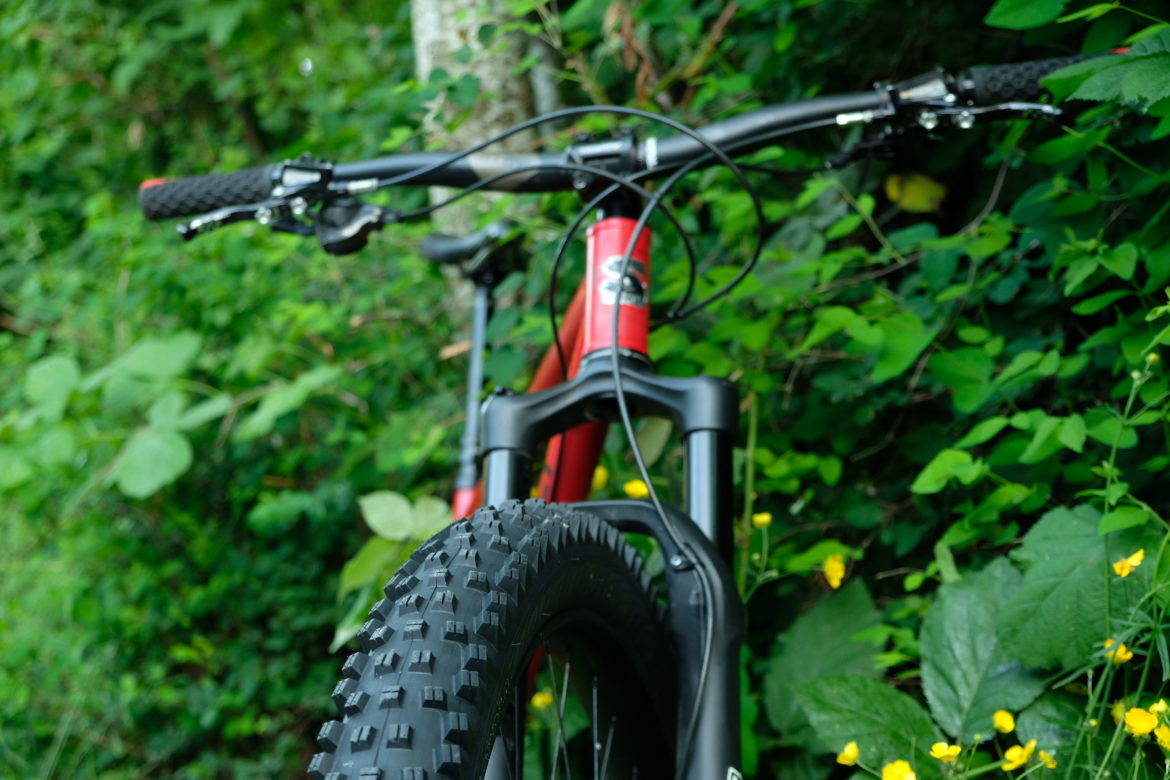
Every couple of years a new trend pops up in the bike industry and presents new benefits to the masses. A few years ago, this trend was plus-tires. 29ers were sort of new again, but still stigmatized as the wheel size for people who cared more about climbing than descending. 27.5-inch wheels had basically convinced everyone that they would be here for good. Oh yeah, and fat bikes were also emerging around the same time.
Looking through the Singletracks’ archives, most of the publish dates around plus-tire related topics were in 2015-2016, ranging from tire reviews, to press releases for new tires and plus-tired bikes. Five years later in 2020, it seems that plus-tires were quickly forgotten by most mountain bikers.

Around that same time, in 2015 and 2016, other interesting things were happening in mountain bike technology. As mentioned above, 29ers had somewhat of a renaissance, 1x drivetrains were taking over, and engineers were dedicating more time to the larger wheel size. At the time, 140mm 29ers were considered “long-travel 29ers”, and 27.5-inch was pretty much standard for park and enduro bikes.
If we again looked through the Singletracks’ archives at press releases and reviews from 2018 and 2019, we’d notice another trend: a lot of information on long-travel 29ers. Now, 29er enduro bikes and 27.5+ couldn’t be more different in their applications, but both of the trends’ decline and rise have a strong connection.
When plus-tired bikes debuted, brands marketed them in a number of ways, whether it was for bikepacking, more traction, combining the attributes of 27.5- and 29-inch bikes, or maybe the most accurate of them all: for “dumbing down” the trail.
Plus-bikes were more widely adopted by entry-level riders because of the confidence they offered on loose or technical trails. By widening the footprint underneath the wheels, riders were less likely to skid out in a corner or lose control on a gravelly descent, though the added traction came with its tradeoffs.
“With plus-bikes, it was poorly executed. The tires were big, so they needed to make them light,” says Eric Francis, owner of Pedal Pushers Cyclery in Golden, Colorado.
“It worked really well for a beginner to ride, but when you stick more advanced riders on them, you’re destroying tires or pinch-flatting them left and right.” For those who rode harder, that meant trying to find the right pressure, which could be tricky. “For me, I always felt that if the pressure was a pound or two too high, then I would radically ricochet off of things.”

Every now and then, Francis gets someone coming into Pedal Pushers and asking about plus-tired bikes, but it isn’t often. Tire brands have seen them decline into a few small applications also, namely on hardtails, for a more forgiving ride and when race-speeds aren’t a consideration.
Salsa Cycles is a brand that was strong on the plus-tire wagon, and still has one of the widest offerings of plus-tired bikes, or bikes that are interchangeable with 27.5+ .
“First, it’s about providing our customers with the flexibility to choose the wheel and tire size that is most appropriate for their terrain and riding style,” says Justin Steiner, brand manager for Salsa. “Some folks like 29” wheels, others prefer 27.5”+ and some terrain rewards one wheel size over the other.”
The other half though is just making it an option since it’s already compatible with the design of the bike.
“Secondarily, 29” and 27.5”+ wheels and tires drive very similar design requirements, so we’re able to offer riders choice in wheel size without sacrificing the performance of either.”
Still, Salsa is seeing consumers that are more interested in its 29er models over 27.5+.
“In the Timberjack hardtail line, we’ve seen a consistent shift in momentum toward 29” wheels,” says Steiner. The Timberjack is an entry-level hardtail starting at $1,250 and available with either 27.5+ or 29-inch wheels.
“In 2019 approximately 75% of Timberjacks were 27.5”+, while the 2020 forecast is trending closer to 50/50. In terms of full suspension [bikes], we’ve seen a much more pronounced shift toward 29” wheels.”

That shift could be explained by the fact that 29ers offer similar confidence in terms of traction and rollover capability to plus-tires, but the tires tend to be sturdier and less novel.
“I think the real nail in the coffin for the 27.5+ were a few things that culminated in its death,” says Francis of Pedal Pushers. ‘The 29×2.6″ came out, and 29ers came into themselves at the same time.’
When 1x drivetrains pushed out 2x drivetrains, engineers could remove the front derailleur from a frame’s discussion altogether. This allowed them to shorten the chainstays, which 29er wheels would have otherwise interfered with, and by widening the chainstays with Boost spacing, and steepening seat angles, they could be shortened even more.
“29ers got playful,” says Francis. He remembers riding early iterations, when geometry was unrefined, and limited the capability of the wagon-wheeled bikes.
“They were just garbage. They did nothing but go straight. They had no playful aspect to them whatsoever. You were pretty much relegated to flat, cross-country style riding.”
For Pedal Pushers Cyclery, the 29er has been so good in the past couple of years, Francis says he has a hard time even selling 27.5-inch mountain bikes anymore.
“In this store in particular, I’m almost all 29. I can’t give a 27.5 bike away.”
He has large and extra-large models marked down by 30%, and visitors still don’t seem interested. Instead, he gets a handful of people every day that are interested in his best-selling bike ever, the 29er Ibis Ripmo.
California-based tire brand WTB has also seen a decline in 27.5-inch sales, in favor of 29er tires. Currently, their most popular tire diameter and width is a 29er, in a 2.4 or 2.5-inch width.
“What we refer to as mid-plus or tires between 2.4 and 2.6 inches in width are becoming the new normal and what are selling the best,” says Johannes Huseby, the director of global OEM sales for WTB.
Plus-tires have peaked and declined for WTB, and Huseby says that about 90% of their sales are for 29ers now. Huseby sees what brands are selling first-hand, and the forecast in his perspective, includes more 29ers.

Even though 29ers look like they’ll now be the bigger wheel size in every which way, that doesn’t mean that bike brands are eradicating 27.5-inch bikes from their lineups.
“Momentum is swinging in favor of 29” wheels across both hardtail and full suspension categories,” says Steiner, of Salsa. “That said, I believe 27.5-inch bikes will have a place in the industry for the foreseeable future. Bikes with 27.5-inch wheels deliver a lively and playful ride compared to their 29-inch counterparts, largely due to facilitating shorter chainstays and, often, shorter overall wheelbases.”
There’s also the fact that some brands cannot make a 29er small enough for shorter riders.
“Additionally, 27.5-inch wheels allow us to offer an XS size for smaller riders. We’re simply not able to package 29-inch wheels and offer dual water bottle fitment on the Spearfish and Horsethief.”
The answer is even more interesting for Santa Cruz. In 2019, they updated the 29er Tallboy, and Hightower, and introduced a long-travel 29er, the Megatower. They were also one of the first brands to bring a 29er to World Cup downhill racing, and Greg Minnaar was the first person to win a World Cup round on 29-inch wheels. The California-based brand now has four models exclusively available in 27.5-inch, six models exclusively available in 29-inch, and the V10 DH bike is available in both.
“As for wheel size, 27.5 is still really popular. Like, really popular!” says Santa Cruz brand manager Seb Kemp. Kemp said that although they have been remodeling and introducing 29ers more frequently than the 27.5-inch bikes as of late, the 27.5-inch bikes are usually their most widely selling models, although that figure can change.
“Both (and all) wheel sizes have their benefits. Generally speaking, how we look at it is 27.5 is the fun sized wheel size, 29 is great for speed and confidence.”
Santa Cruz has also done really well with the “mid-plus” 2.6-inch wide tire for their 27.5-inch bikes. The Bronson, 5010, and the new Heckler have options to come with 2.6-inch wide tires front and rear, although the full-suspension 29ers do not.
What’s clear is that 27.5 is still going to be in the picture for a while, even if it’s only in the corner of the frame. 29ers are now more popular and anecdotally, offer more confidence, and are becoming increasingly more playful and agile, even when they are beefed up with six-inches of travel. But, who knows, the bike industry’s mind is never made up.
“Cycling is a fashion industry,” says Steiner. “Right now, 29-inch wheels are fashionable. In a couple years, we’ll collectively re-discover the fun and responsive ride of 27.5-inch wheels and momentum will shift back to a balance point. I do not believe 27.5-inch wheels will suffer the same fate as 26-inch wheels have.”










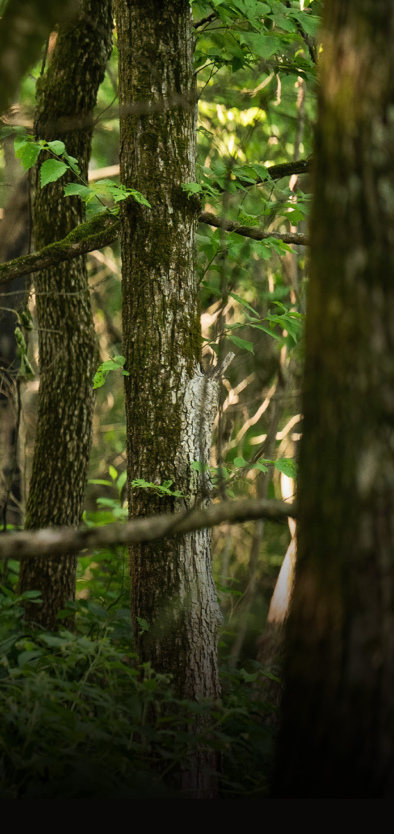


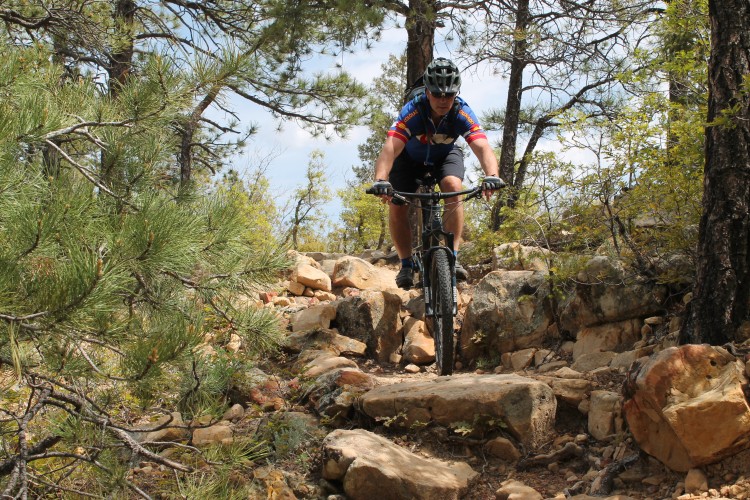


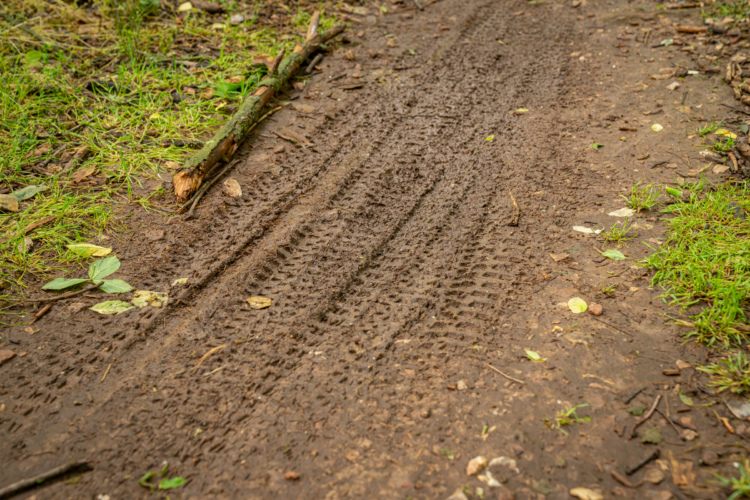
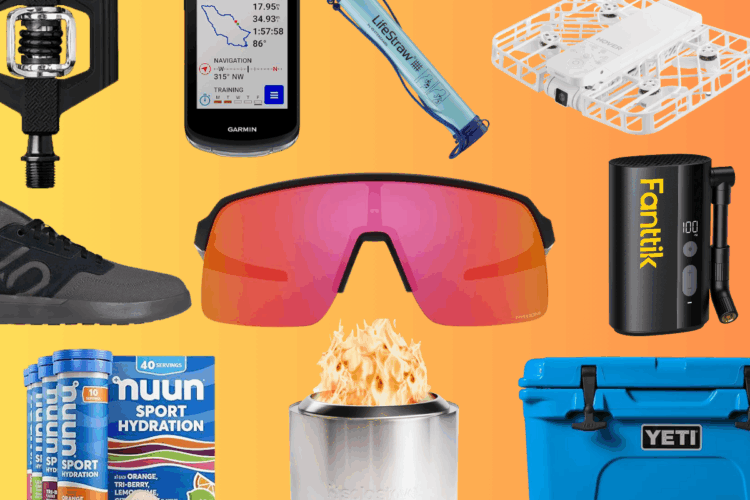
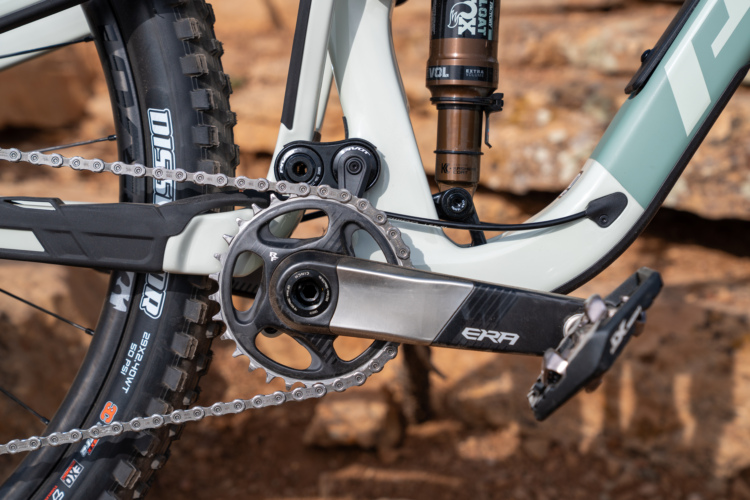
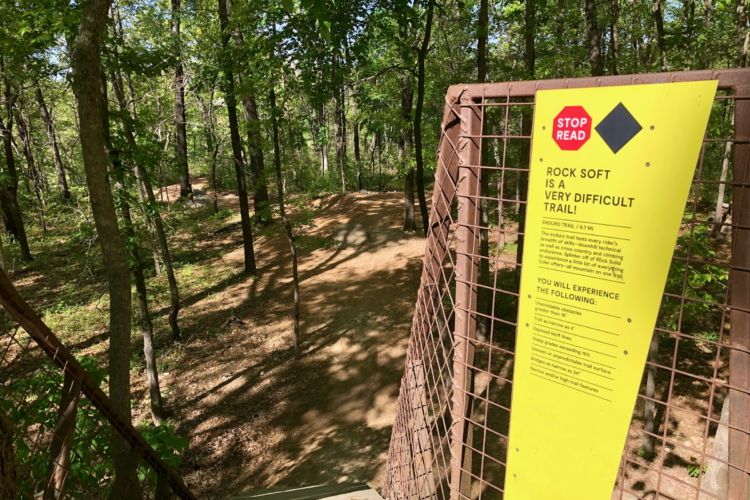

38 Comments
Feb 16, 2021
2. They carry speed. True. But why is this a positive for a newbie? Just the opposite, out of control speed for the trail is one of the common causes of crashes for newer riders. On 29ers you are more along for the ride, on 27.5 you have to control the bike more. For a beginner, again, I think that smaller is the way to go.
And now let’s look at the downsides- 29ers are not as easy to maneuver and are not as flickable at 27.5. Now before 29er fans start shouting, I am not saying they are crap at these things like they used to be. They have come a long way and are quite good now. BUT, they are still not as good as 27.5. Again, for a new rider who is focusing on the technique of turning, why not give them a bike that makes that easier. One that will not keep carrying as much speed into the turn and one that is easier to get around the corner? And the same thing with learning bunny hops and jumps and drops. Large travel 29ers are awesome but are beasts. Learning how to jump and do drops and manual and bunny hop etc would be so much easier for a newer rider on a 27.5.
I just see so many people out on the trail that are obviously just beginning mtbing on 29ers and I see them fighting their bikes. And I think how much easier it would be if they had a bike that made some of the things they are trying to do easier. And at the same time, those same 29ers are putting them at risk allowing them to go down some trails they don’t have the skillset to do, but the 29er is handling it and taking them along for the ride. And while that is fine so long as it stays as expected, throw in something unexpected and they lack the skills to handle it and crash. Now I am not saying that 27.5 are for beginners. Many of us choose to ride 27.5 because we like the more interactive nature of them, requiring a rider to handle the bike over stuff and down trails. And we just get better and better at it as we gain experience and skills. And we like to play a bit on the trails, which 27.5 tend to naturally just beg you to do. But if you are racing or interested in taking it to the next level, once you know how to bunny hop and manual and jump and drop and control speed and corner and shift body weight etc then go to a 29er. Now that the rider knows how to handle things when the 29er gets overwhelmed, then its all good.
Re tire width, I think plus is still around for a lot of riders, at least based on what I see out there, we just don’t use the word plus as much, we tend to use the width instead (2.6, 2.8 3.0 whatever). And many bikes are still made capable of taking a 2.6 or wider, they just aren’t pushing that marketing as much now. One thing I really thank the plus movement for is in general making us realize that wider rims and tires have certain advantages. Personally I have settled on 2.6 on i35s as my tire width of choice for my do-it-all which I absolutely love, and I don’t know if the industry would have gotten there if it weren’t for plus.
My advice to the bike industry, stop pushing 29ers down everyone’s throat and listen to the person buying the bike. How much experience do they have, how skilled are they, what types of trails are they riding, what type of riding do they like or envision themselves doing, why do they want to get into mtbing or, if they already are, what do the like about it, are they racing or having fun, or looking for fitness? If the industry would listen more to the customers there’d be plenty of variety, because the industry would be putting people on the proper bikes.
Feb 18, 2020
Feb 17, 2020
I just don't get all the emphasis on "29ers are faster". I ride mountain bikes because its fun to rail berms, fly down hills, hit jumps and drops, manual across things, etc. If all I cared about was going faster I'd get a road bike.
Feb 21, 2020
I just find is sad that places like GMBN, Singlestracks, Pinkbike, and on and on...have to do what "corporate" wants. Hey when they pay the bills then I guess you are their slave. It's really about what Trek, Specialized, Giant, Santa Cruz, Cannondale, Intense, Canyon, Yeti, Scott and so forth...It's what THEY PUSH. They have all painted themselves in a corner and at the end of the day they have to keep coming up with reasons as to why you should "upgrade" or change to push sales. It happens every season and every year. The 26" bike was fine for decades...the bike companies still existed and they still made money. It will be interesting to see where it all ends. The title of this article is misleading by nature. It should read "Bike company executives abandon the plus bike push, 27.5 has lost its novelty 29'rs are on their radar now".
Feb 21, 2020
Feb 21, 2021
Feb 18, 2020
Feb 23, 2020
Feb 20, 2020
Feb 23, 2020
Feb 20, 2020
Feb 24, 2020
Feb 18, 2020
I don't race and I don't dedicated DH, so ultimate speed is not so much a factor for me.
Love the added patch, and the 27.5 keeps me as nimble as I need to be.
At 5'8", I won't be moving up to 29" anytime soon.
Feb 18, 2020
I for one like the plus size tires on the 1500$ dollar bikes. It’s like having a full suspension bike without having to spend full suspension bike money. It serves this purpose very well.
Feb 20, 2020
Feb 17, 2020
Feb 22, 2020
So play with your 29 inch wheels all you want. I am not about to spend a ton of money on another bike when the one I have is capable of far more than I am.
Feb 24, 2020
Dec 22, 2020
Feb 18, 2020
I dropped five pounds from my fat bike by upgrading the wheels and tires. Did it make a difference? Hell yeah! But I'll bet there's a lot of people who gave up on that bike because it was just so ... sluggish. And they probably tell themselves that fat bikes are just for beginners, because they're just no fun once you get used to them. Traction isn't just for beginners; if you get more of it, you can *do* more with it.
Feb 21, 2021
Feb 21, 2020
This articke makes me realize the 26er will soon rise again as a popular wheel size 👍👍👍
Feb 21, 2020
Feb 18, 2020
(1) 27.5 (up to 2.4)
(2) 27.5++ (over 2.4)
(3) 29
The article often mixes (1) and (2), and that impacts the analysis.
It would make sense to say folks that selected option (1) 10 years ago (the biggest size managing downhill at that time) are now going for option (3) (the biggest size managing downhill NOW). These type of riders would not go anywhere a plus tire when they came out, but they show up in the declining numbers of 27.5. This is no argument against plus size.
The other aspect not well represented is tubeless. The weight of my 27.5++ tube I carry as spare is impressive. Going tubeless addresses the PSI argument against plus tires and their handling at high PSI.
If I combine the Santa Cruz and WTB statement I could come to the conclusion that 29 tires have more defects because of the smaller impact area :-)
P.S.: Love my Fezzari Abajo peak with 27.5 (2.8)
Feb 18, 2020
Feb 21, 2020
Feb 17, 2020
Feb 23, 2020
Feb 22, 2020
that said, too many plus bikes have been sold with too narrow rims. this makes high tyre pressure necessary to stabilise the ride: enter bounciness instead of comfort and control.
i ride a 29 and a 26 both with 40i rims, and sweet spot with those is 2.4 - 2.6. for 2.8 - 3.0 tyres you really need 45-50i rims. btw putting 40i on a 26 makes almost as much difference in speed and rideablility as going from 26 to 29.
Feb 17, 2020
Feb 20, 2020
Feb 21, 2021
Feb 17, 2020
When it comes to wheel size, 29er's are best for average to taller than average persons. 27.5 is best for shorter than average persons. My 5'3" wife loves her 27.5 with 2.6 tires and I've got to say it looks right for her size. In the end, everyone should ride what they like!
Feb 20, 2020
Feb 17, 2020
Feb 17, 2020
Feb 18, 2020
I simply think the point of the article is to point out the continued progression of 29ers.
27.5 I think will stay around for a long time, mainly for shorter riders. However I do think plus tires will be virtually nonexistent in time. They have A LOT of downsides. Heavy when made tough enough for mountain biking, they are a very poor substitute for suspension, handle poorly and are awful to jump with.
Yes, some people like plus tires. But from what I’ve seen not enough for manufacturers to keep developing and making them in any meaningful way.
My Timberjack will be getting new tires this coming season, probably Maxxis Dissector 2.4 WT’s. 2.4” seems to give a good balance of volume, traction, steering precision, comfort, weight and durability.
Any bigger than that, I feel like it starts to have too many trade offs.
That’s for me and my riding. If you like plus, ride them. Nobody on the trail or the internet should impact what you personally like to ride.
Feb 21, 2020